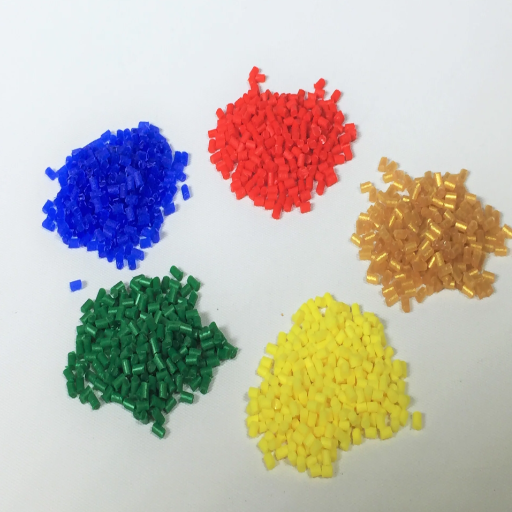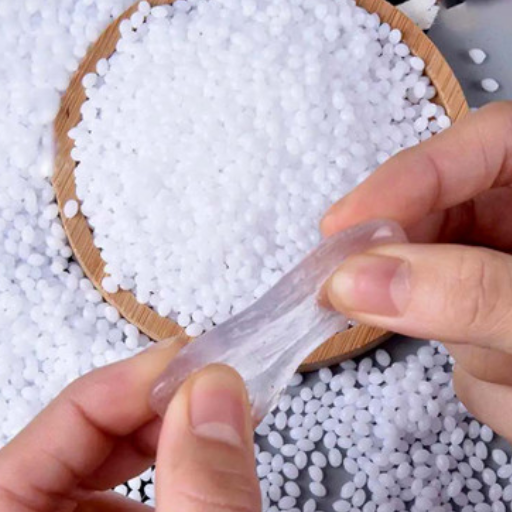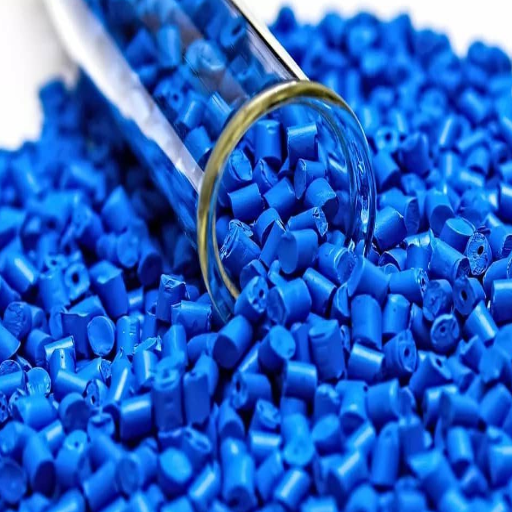Polyphenylene Sulfide (PPS) is an advanced thermoplastic with unique characteristics stemming from excellent chemical, mechanical, and thermal properties. When it comes to processing engineered components and parts used throughout various industries, PPS plastic pellets are indeed a viable solution. This paper emphasizes the primary features of PPS that set it apart from the rest, such as its lightweight nature, withstanding harsh chemical exposure and extreme weather conditions. Furthermore, we will pay attention to the numerous methods and areas of its usage, including the manufacturing of car parts, various electronic elements, and industrial machinery, which demonstrate how exactly PPS manages to cope with the demands that contemporary production imposes. Let us explore the possibilities of this simple yet revolutionary material, PPS plastic pellets.
What are PPS plastic pellets, and how are they made?
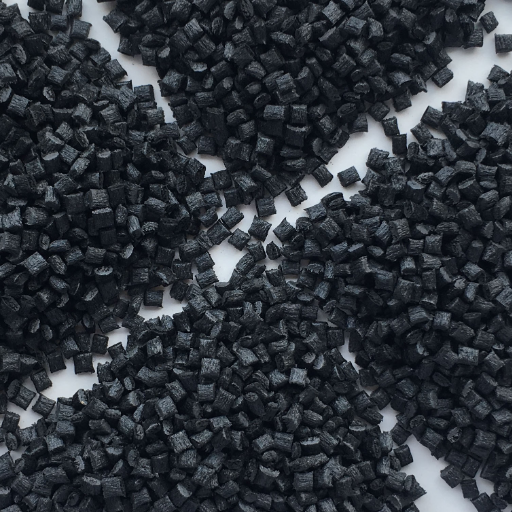
The Pellets of Polyphenylene Sulfide (PPS) belong to high-performance thermoplastic engineering polymers that demonstrate excellent mechanical characteristics. These thermoplastic polymers are base materials for developing accurate and substantial parts. PPS is produced through polymerization, which generally takes place using p-dichlorobenzene and sodium sulfide. The polymer thus produced is then pelletized by extrusion, which helps obtain pellets of desirable size and consistency. The pellets exhibit outstanding thermal properties, low moisture absorption rate, and dimensional conformity, making them ideal for use in the automotive, aerospace, and electronics sectors.
Understanding the chemical structure of polyphenylene sulfide
Semi-crystalline polyphenylene sulfide, more commonly known as PPS, is a polymer consisting of alternating para-phenylene and sulfur within its structural backbone. This ensures that this repeating unit is bonded throughout, allowing the polymer to withstand harsh chemicals and extreme heat temperatures. For the chemical groups to bond concatenated linearly, this allows the ‘para’ configuration to restrict and build on its rigidity and mechanical strength. Such properties can include tensile and creep resistance under elevated temperatures due to high crystallization levels acquired due to the orientation of molecular chains. Even in the description, this chemical substance is highly robust and inactive; PPS performs exceptionally well in high-intensity and high-performance environments.
The manufacturing process of PPS resin
One would have to go through a series of processes to obtain the PPS resin. To begin the process, sodium sulfide and p-dichlorobenzene are mixed in a polar solvent such as N-methyl-2-pyrrolidone (NMP), which ignites the reaction by initiating the nucleophilic substitution reaction. The following process requires one to maintain extremely high pressures and temperatures while keeping them under a tight, controlled environment, allowing linear aromatic sulfide’s chain structure to attach to the PPS molecule. Once complete, the product is washed with water before being purged and distilled to rid the remnants of hanging solvents and substances around the product. The final stage of the process involves putting the resin throw a dryer and timing some pellets along with it, this helps get the product ready for application at maximum output efficiency.
Different types and grades of PPS plastic
The market caters to diverse applications and performance requirements, and that explains why there are several types and grades of plastic PPS available in the market. Some of these include unfilled PPS, which has extreme temperature resistance while chemically stable, and glass and carbon grades, which enhance the mechanical properties and improve the cross-section. Furthermore, exceptional types are developed for conductivity, low outgassing, and ultra-high, so the PPS finds applications in the automotive and aerospace sectors and electronics. The choice of the grade varies according to the thermal requirements, the amount of mechanical load, and the environmental effects to which the component would be exposed.
What are the key properties of PPS plastic material?
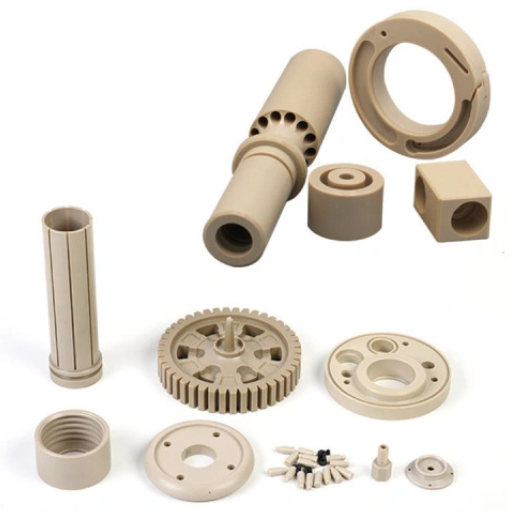
PPS is one plastic material easily regarded as the best for heat tolerance and stability. It can withstand approximately 200 to 240 Degrees Celsius and is Used as an outermost layer wrapping. What sets the material apart is its burning point, it is quite high which allows using it in extreme conditions without breaking down, in Flames it is fairly flame resistant, and Pretty good vapor absorbing. The economy grade of the polymer proves sufficient durability when used in acid solvents, organic solutions, and heat treatment, so it is easier to say that it is difficult to destroy the material. These characteristics explain why PPS is a versatile material across several industrial sectors.
Thermal properties and high melting point
Polyphenylene sulfide (PPS) is acknowledged for its superior melting point and remarkable heat stability, which usually falls within the range of 540˚F-552˚F (282˚C-289˚C). This kind of polymer performs excellently in terms of thermal exposure as it does not corrode even after persistent exposure to high temperatures, thus keeping its mechanical and structural properties in place. The glass transition temperature of PPS is around 180 degrees Fahrenheit (82 degrees centigrade). It can withstand long contact periods with a maximum temperature of 240 degrees centigrade, depending on the specific grade and the application area. The reason for this thermal behavior is the aromatic sulfide backbone structure in the chain, which adds rigidity to the chain and restricts chain mobility even when the temperature rises. These thermal properties enable PPS to be used in high-performance sectors like the automobile, aerospace, and electronics, where the components are prone to high heat and harsh working conditions.
Mechanical strength and dimensional stability
Due to its high crystallinity and strong bonding between the molecules of polymers, PPS has superior mechanical strength and outstanding dimensional stability. Hence, its very low deformation of any form under mechanical load renders it challenging and precise even in critical applications with stringent tolerances. Another property that PPS possesses is low moisture adsorption, which improves the geometrical stability of the polymer arrangement in regions where humidity is ever-changing. It is the preferred material in sectors that operate in environments with very high thermal and mechanical pressures.
Chemical resistance and flame retardant characteristics
Polyphenylene sulfide (PPS) can withstand damage caused by a sahib in molecular weight development, and its construction encompasses a wide range of solvents, acids, bases, and hydrocarbons. This is made possible by its stable and complex molecular structure. For this quality, PPS is most sought in applications that involve chemical processing, automotive with fuel, and lubricant contact.
Also, PPS does not require any additives to perform its function as a flame retardant. As for aerospace, electrical, and industrial applications, a high limiting oxygen index (LOI) with low smoke during combustion conforms to the high fire safety requirements. These properties, in turn, prove that PPS is an adaptable material designed to withstand incredible temperatures and other aggressive environments. Everything else is bound to be performance and safety commendable.
How does PPS compare to other high-performance thermoplastics?
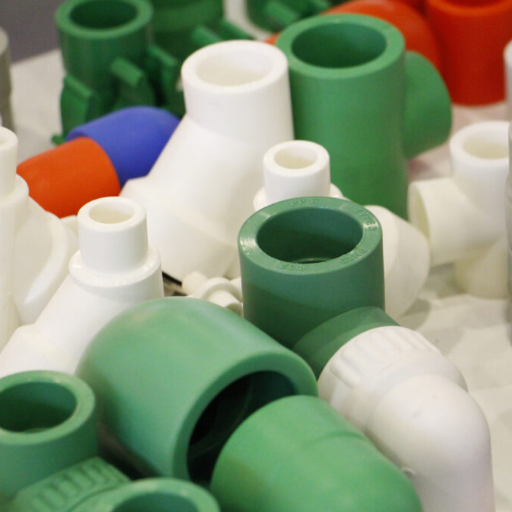
PPS displays a unique blend of properties, making it different from other high-performance thermoplastics. PPS is said to be better than PEEK and PEI materials in terms of chemical resistance and thermal stability, which is critical for harsh environments. Even though PEEK might be more assertive, more rigid, and more stable than PPS at high temperatures, the advantages PEEK has. Namely, ease of processing and cost efficiency cannot be ignored. In the same way, the excellent flame resistance properties and low smoke generation produced by PPS are as good as others or even better than most high-performance materials, which makes it a viable candidate for applications where safety and reliability are key.
Advantages of PPS over other polymers
PPS or Polyphenylene Sulfide has unique properties that make it different from other polymers, making it useful in various applications. Another of its key benefits is its melting point of around 280°C, making it thermally and dimensionally stable in high-temperature ranges. It also enhances long-term endurance in aggressive environments because it is chemically and thermally stable. Because of low water swelling, the high dimensional stability is performed continuously in humid environments, making them suitable for precise machine parts.
Another important point is its natural flame resistance and low smoke emission, which comply with demanding safety standards in electronics, automotive, and aerospace industries. Also, PPS possesses good mechanical strength and rigidity and retains its characteristics over various temperatures. It is cheaper and easier to work with PPS than other high-performance polymers such as PEEK, thus giving satisfactory quality with acceptable performance. This is why PPS is well suited for use in areas that require low weight, high strength, and thermal stability.
Limitations and challenges of using PPS
In practical terms, there are certain downsides to PPS. Its brittleness is one of the main factors that could prevent PPS from being in areas requiring high-impact resistance. Despite the good chemical and thermal resistance that PPS offers, its manufacturing can be limited by its high melting point; thus, it requires certain conditions. Another limiting factor is that PPS can absorb moisture, which could, however, affect the dimensional stability of an object in specific environments. These issues make it necessary to look into great detail when picking this material for crucial tasks.
What are the main applications of PPS plastic pellets?
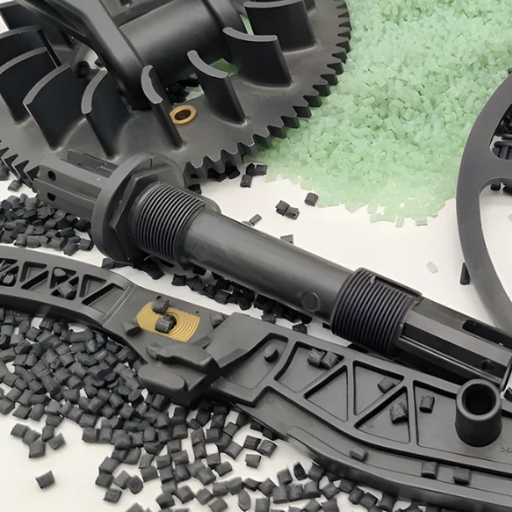
Pps plastic pellets have a lot of applications that require great strength, stability, and ability to withstand chemicals. It is used mainly in the automotive industry, where PPS is necessary for producing fuel system components, electronic housing, and transmission components because of its strength and high-temperature resistance. The electronics industry uses PPS for connectors and switches because of its sound insulation and dimensional stability. Moreover, PPS is used in industrial applications for pump parts, filters, and special medical equipment requiring sterilization resistance. These attributes make PPS a vital material in harsh conditions.
The automotive industry uses PPS compounds.
Compounds of polyphenylene sulfide, known as PPS, have been found to have broad applications in the automotive industry because of their high thermal resistance, mechanical strength, and chemical resistance. Such features allow PPS material to be effective in critical operating zones, such as engine components and exhaust systems. With its properties allowing it to resist dimensional changes in temperature and during contact with auto fluids, PPS is frequently used in making thermostat housings, water pump impellers, and electronic control systems. On top of that, the combination of PPS’s flame resistance and electrical insulation properties makes it suitable for manufacturing sensor housings, connectors, and relays, among other P. It is also one of the most efficient materials to be used as it is strong yet light in weight, meaning the total weight of the vehicle will be light, improving fuel economy and performance overall.
Electrical and electronic applications
PPS (polyphenylene sulfide) is generously used in electrical and electronic devices because of its ability to withstand heat, chemical, and mechanical forces. It is often found in high-end constructions of connectors, switches, and circuit board substrates, which require both precision and reliability throughout. Due to its innate characteristics of a flame retardant and excellent dielectric, it is suited for devices that operate in high temperatures and aggressive chemicals and require high electrical insulation. Further, PPS facilitates the trend of miniaturization and efficiency improvements, meeting the requirements of compact and densely packed electronics.
Industrial and chemical processing equipment
Due to its high chemical corrosion resistance and good dimensional stability at elevated temperatures, polyphenylene sulfide (PPS) is essential for machine and chemical processing equipment. It is used daily in pump housings, valves, seals, and filter materials. These properties are advantageous because of PPS’s low moisture absorption and high durability, which are well suited for harsh processing environments with high mechanical and chemical demands. Therefore, PPS makes it possible to create highly dependable systems in areas where performance and safety are essential.
How is PPS processed and molded into final products?
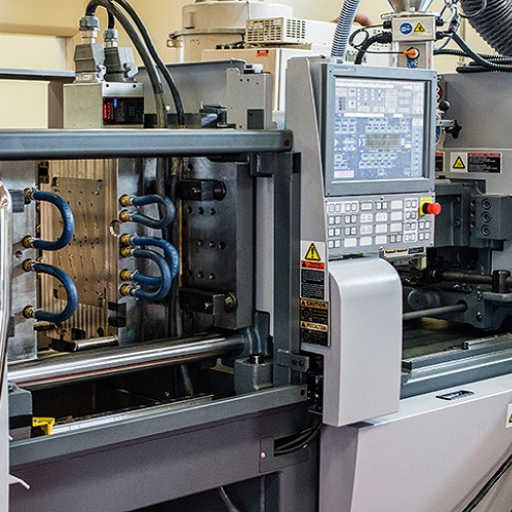
Polyphenylene sulfide (PPS) can be influenced through various techniques, such as mold forming extrusion and injection molding. For this case, how PPS is utilized entails the delivery of the compound via pellets or powder, making it melt into a specific shape. During injection molding – the first step is heating PPS, which is then pushed into a mold cavity until cooled and hardened. PPS is shaped to either become its melt or solid. The more significant shaped complicated parts that do not require extensive pressure are made by placing PPS in a heated mold to compress it, shaping it further – known as compression molding. Regarding the technique of extrapolated molten PPS, it is directed through either beads or a die. It is essential to mention that the crystallinity and precise shape of the end product heavily rely on the adjustment of the temperature and the overall structure of the mold.
PPS injection molding techniques
PPS injection molding focuses on the material to reach the required strength of high-performance parts with significant shape retention. The pre-drying PPS resin is first done to ensure no adverse effect on surface structure from hydrolysis. Furthermore, this leads to the removal of the component. Selective temperature ranges between 600F and 650F are known to melt the material and inject the compound into a specific cavity. Maintaining the temperature of the mold is important as well for the final part to achieve its desired shaping, for most cases the temperature tends to fall between the ranges of 275F to 300F.
PPS’s flow characteristics are also critical, as its high viscosity and low shrinkage require robust molding systems to withstand high pressure. Gate design should aim to reduce stress concentration, and venting systems should be designed so that gases are not inadvertently trapped. Chemically, thermally, and mechanically strong, PPS is extensively employed for making automotive, electrical, and industrial components. With these measures, molding processes can manufacture PPS parts that are high quality, consistent, and accurately placed.
Reinforcement options for enhanced properties
PPS materials, in particular, have their properties modified using glass, carbon, or mineral fillers. Their high volumetric content significantly increases mechanical strength, rigidity, and impact resistance, making them ideal for use on structural members. Carbon fibers, in contrast, have high strength-to-weight ratios and improve thermal and electrical conductivity. They are, therefore, used in many high–end applications. Talc or mica would be ideal mineral fillers to achieve dimensional stability and a reduction of warpage. Each type of reinforcement depends on the application, such as cost, weight, and performance.
What are the environmental considerations for PPS plastic?
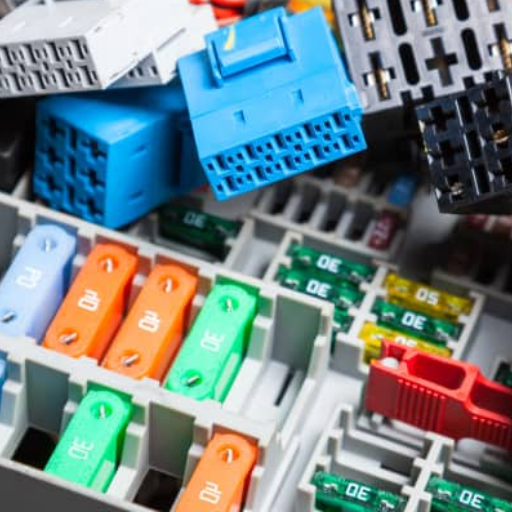
Polyphenylene sulfide (PPS) has several environmental implications. First, its manufacturing processes are considered energy-consuming and require the utilization of chemical precursors, which are likely to cause carbon emissions into the environment. Nevertheless, because of its unique ability to endure stress and resist decay, PPS can potentially increase product use, reducing wastage from undue replacements. There is difficulty in recycling of PPS as it is thermoset in some instances and has a high melting point, however, new approaches for mechanical and chemical recycling are beginning to emerge which are likely to address environmental issues. Furthermore, its use in replacing heavier materials in automotive and aerospace applications would translate into a reduction in fuel usage and emissions, which is also favorable to the environment.
Recyclability and sustainability of PPS
Polyphenylene Sulfide( PPS) is an atypical polymer. On the one hand, it is resistant to melting and dissolving, which makes it unsurprisingly hard to recycle or reuse. Still, on the other hand, it is extremely easy to mold, which is why various researchers are starting to develop methods and techniques such as solvolysis and pyrolysis that use PPS. Mechanical recycling, on the other hand, uses PPS for definite applications but is again nascent owing to the potential loss of effectiveness after exploration. However, in the control of sustainability, PPS has moderately strong prospects and can be said to be a substitute for metals, thus lowering the weight of a vehicle or an airplane’s hygiene plastic, which helps the car or plane to become more fuel efficient. Also, there is a chance to research the use of organic compounds during the production of PPS to combat the threats faced. In other words, there is hope for better ways to effectively use the polymer and sustain its use in the long run, even though PP faces various challenges.
Regulatory compliance and safety aspects
In the industrial use of PPS, meeting the regulatory requirements is paramount. First and foremost, the materials used in the PPS’s construction should possess relevant certifications such as ISO and ASTM to ensure the quality and performance of the product across the regions. Furthermore, with regards to the use of PPS, due to its characteristics, specific environmental policies for the manufacturing of PPSese, such as REACH or RoHS, may be pertinent in controlling hazardous substances. From a safety perspective, using a material with high thermal stability and chemical resistance becomes critical since the material will not fail under extreme conditions and thus reduce the risks during operation. In addition, there is always a need to be informed of the changing regulations and carry out extensive safety assessments to ensure that the product is used in relevant conditions and remains effective for the longer term.
References
Frequently Asked Questions (FAQ)
Q: What is PPS plastic, and what are its key properties?
A: PPS (Polyphenylene Sulfide) is a high-performance thermoplastic polymer known for its excellent mechanical properties, heat resistance, and chemical resistance. It offers good mechanical strength, high temperature stability, and outstanding electrical insulation properties, making it an ideal material for various demanding applications.
Q: What are the main types of PPS, and how do they differ?
A: The main types of PPS include linear PPS and branched PPS. Linear PPS offers higher crystallinity and better mechanical properties, while branched PPS provides improved processability. Various PPS grades are also available, such as unfilled PPS, glass fiber reinforced PPS, and other specialty grades, each offering different material properties tailored to specific applications.
Q: What are the key advantages of using PPS material in manufacturing?
A: PPS material offers numerous advantages in manufacturing, including high temperature resistance, excellent chemical resistance, good mechanical strength, and superior electrical insulation properties. It also maintains tight tolerances, has low moisture absorption, and exhibits dimensional stability, making it ideal for applications that require reliable performance in harsh environments.
Q: How does the PPS manufacturing process work?
A: The PPS manufacturing process typically involves polymerizing p-dichlorobenzene and sodium sulfide. The resulting PPS polymer is then processed into pellets or other forms. The specific manufacturing process may vary depending on the desired properties and the type of PPS produced (linear or branched). Advanced techniques are used to control the structure of PPS and achieve the desired material properties.
Q: What are some typical applications for PPS products?
A: Due to their unique properties, PPS products find applications in various industries. Common applications include automotive components, electrical and electronic parts, chemical processing equipment, aerospace components, and industrial machinery. PPS is used in applications that require high temperature resistance, chemical resistance, and excellent mechanical and electrical properties.
Q: How do the mechanical properties of PPS compare to other engineering plastics?
A: PPS offers superior mechanical properties compared to many other engineering plastics. It exhibits high strength, stiffness, and dimensional stability, especially at elevated temperatures. Glass fiber-reinforced PPS grades provide even higher strength and rigidity. PPS maintains its mechanical properties over a wide temperature range, outperforming many other plastics in terms of long-term performance and reliability.
Q: What are the electrical properties of PPS, and why is it suitable for electrical applications?
A: PPS has excellent electrical properties, including high dielectric strength, low dielectric constant, and good arc resistance. These properties make it an ideal material for electrical insulation and electronic components. PPS maintains its electrical properties even in harsh environments and high temperatures, making it suitable for demanding electrical applications in various industries.
Q: Are there different grades of PPS available for specific applications?
A: Yes, various PPS grades are available to meet specific application requirements. These include unfilled PPS, glass fiber-reinforced grades, mineral-filled grades, and specialty grades with additives for enhanced properties. For example, Ryton® PPS grades offer a wide range of options with different levels of reinforcement and additives to optimize performance for specific applications.
Q: How does PPS perform in terms of chemical resistance?
A: PPS exhibits excellent chemical resistance, making it suitable for harsh chemical environments. It resists various solvents, acids, bases, and hydrocarbons. This property makes PPS an ideal material for chemical processing equipment, fuel system components, and other applications where exposure to aggressive chemicals is a concern.
Q: What are the environmental considerations when using PPS plastic?
A: PPS is considered a more environmentally friendly option than other high-performance plastics. It is recyclable and does not contain halogens or toxic additives. PPS products’ high durability and long service life also contribute to reduced waste. However, like all plastics, proper disposal and recycling practices should be followed to minimize environmental impact.

